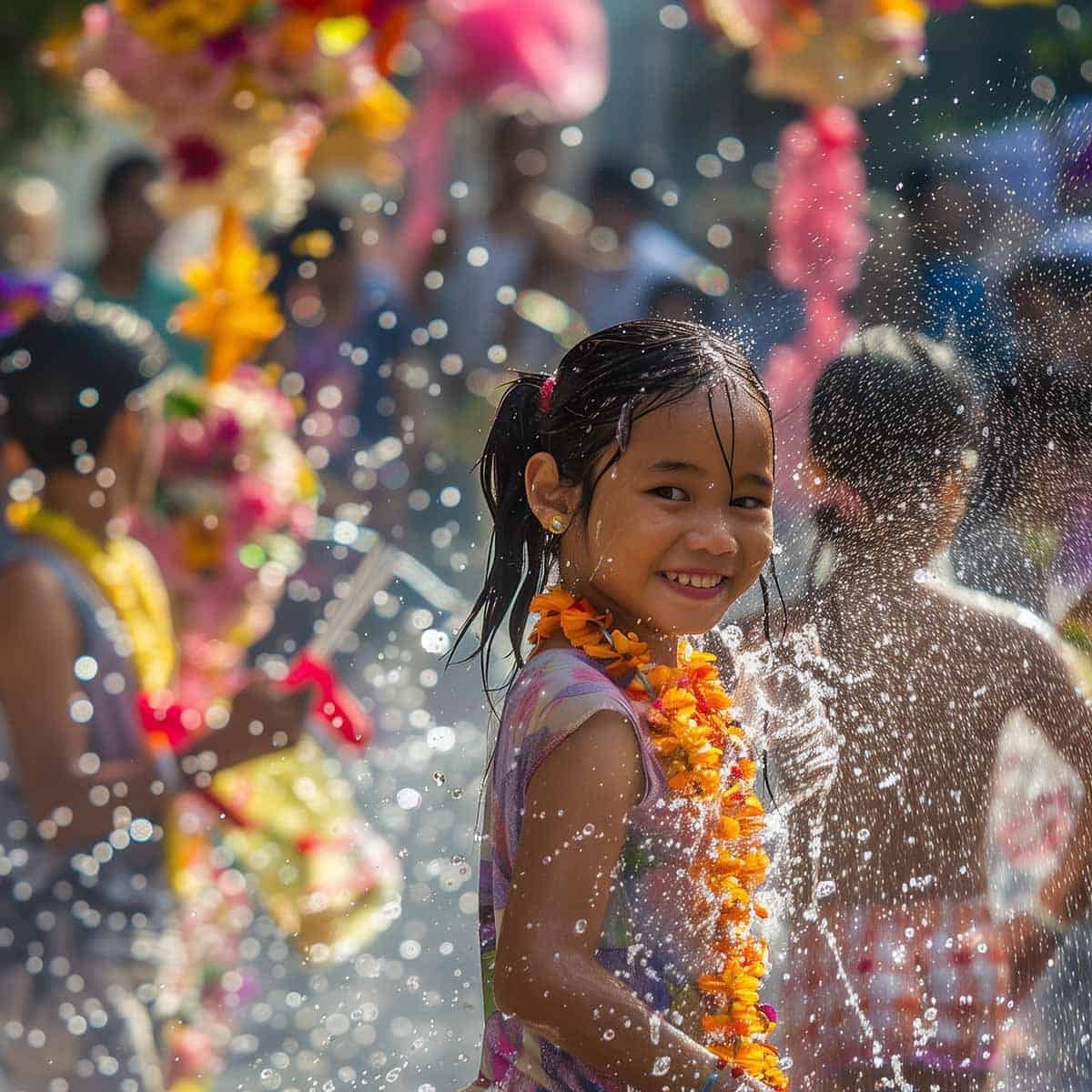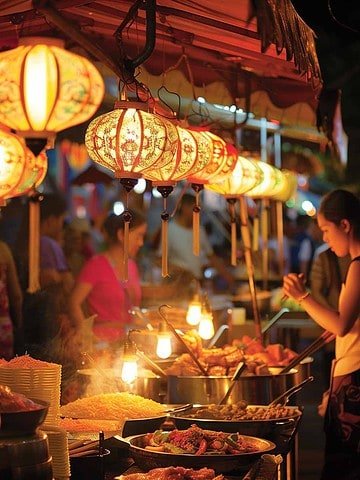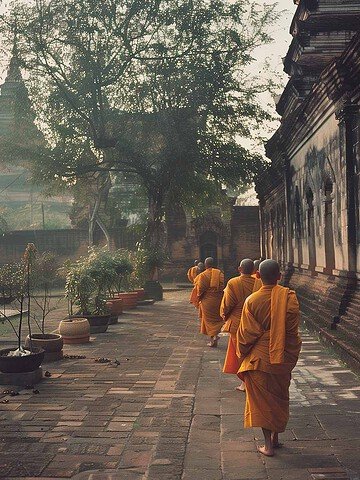
In Thai culture, food is more than sustenance; it is a thread that weaves through generations, traditions, and celebrations. Nowhere is this more evident than in the vibrant festivals of Songkran and Loy Krathong, where food takes center stage as a symbol of cultural identity and communal joy.
Introduction
Thai festivals are vibrant expressions of our rich cultural heritage, blending ancient rituals with modern celebrations. Among the most revered are Songkran, the Thai New Year, and Loy Krathong, the Festival of Lights. Beyond their festivities and rituals, these occasions are marked by a rich tapestry of traditional foods, each dish carrying profound symbolic meanings that deepen the experience of these cherished celebrations.
Songkran Festival: The Thai New Year
Historical Background
Songkran marks the traditional Thai New Year and is celebrated annually from April 13th to 15th. Historically, it originated from ancient rituals of cleaning and purification, symbolizing the washing away of the past year's misfortunes and welcoming the new year with a fresh start.
Rituals and Traditions
Central to Songkran is the custom of water splashing, where people joyfully splash water on each other as a gesture of cleansing and blessing. Families gather at temples to offer food to monks and pay respects to elders as a sign of gratitude and reverence.
Traditional Foods
Khao Chae: A quintessential dish during Songkran, khao chae consists of jasmine-scented rice served with various accompaniments such as fried shrimp paste balls, stuffed bell peppers, and shredded sweetened beef. It is traditionally enjoyed to cool the body during the hot season and symbolizes the abundance of the new year.
Khanom Thai: These intricately crafted Thai desserts are not only delicious but also hold symbolic meanings. Khanom Krok, for example, symbolizes unity and togetherness, and it is often shared among family and friends during Songkran gatherings.
Other Symbolic Foods: Delicacies like mango sticky rice (khao niew mamuang) and dumplings (kanom jin) are also prominent during Songkran, each carrying its own auspicious symbolism of prosperity, sweetness, and familial harmony.
Loy Krathong: The Festival of Lights
Historical Background
Loy Krathong, typically celebrated in November, pays homage to the goddess of water, Mae Khongkha. Originating as a rice farming ritual to give thanks and seek forgiveness from the water goddess, it has evolved into a festival of lights and offerings.
Rituals and Traditions
During Loy Krathong, people release krathongs (lotus-shaped baskets) adorned with candles, incense, and flowers onto rivers and waterways. This act symbolizes letting go of negativity and expressing gratitude for water's essential role in agriculture and daily life.
Traditional Foods
Khao Tom Mat: A fragrant Thai dessert made from sticky rice, coconut milk, and banana wrapped in banana leaves, Khao Tom mat symbolizes purity and offerings to ancestors and spirits during Loy Krathong.
Fruits and Sweets: Offerings of fruits such as bananas, oranges, and mangoes, alongside sweets like coconut cakes (kanom piakpoon), are made to honor the goddess and bring good fortune for the coming year.
Other Festive Delicacies: Special dishes like crispy pancakes (kanom buang), symbolic of prosperity and happiness, are also enjoyed during Loy Krathong gatherings, reflecting the festival's joyous and celebratory spirit.
Symbolism of Food in Thai Culture
Food in Thai culture goes beyond mere sustenance; it serves as a vehicle for conveying values, beliefs, and cultural identity. Ingredients are chosen not just for flavor but also for their symbolic meanings. For instance, coconut milk is used for its richness, symbolizing prosperity, and bananas are chosen for their association with good fortune. These ingredients, along with others, play a significant role in the symbolism of Thai festival foods.
Concepts of Symbolism
In Thai festivals like Songkran and Loy Krathong, food plays a pivotal role in rituals that reinforce our cultural values of respect, gratitude, and unity. The tradition of sharing meals with and offering food to monks and spirits helps build a strong sense of community and maintain our ancestral customs.
Role of Rituals
Food rituals are deeply ingrained in Thai society, providing a tangible connection to the past while evolving to reflect contemporary lifestyles. From the meticulous preparation of traditional dishes to communal dining, these rituals strengthen familial bonds and preserve cultural heritage.
Culinary Techniques and Preparation
Traditional Cooking Methods
Thai cuisine is famous for its complex and rich flavors. and diverse cooking techniques, many of which have been passed down through generations. Techniques such as pounding curry paste with a mortar and pestle or steaming desserts in banana leaves are integral to preserving authenticity in festival foods.
Role of Family and Community
Preparing festival foods often involves the collective effort of family members and community members. Recipes are shared, techniques are taught, and meals are enjoyed together, reinforcing social bonds and passing down culinary traditions. This communal aspect of food preparation is a significant part of Thai culture, fostering a sense of belonging and creating lasting memories.
Modern Influences
While traditional recipes remain cherished, modern influences such as urbanization and globalization have led to adaptations of ingredients and cooking methods. These adaptations ensure that festival foods stay relevant and accessible to diverse audiences while maintaining cultural significance.
Contemporary Celebrations and Global Impact
Regional Variations
Throughout Thailand, regional variations in festival foods reflect local customs and ingredient availability. For example, northern Thai celebrations may feature dishes like khao soi, while southern Thailand may incorporate seafood specialties into festival feasts.
Globalization
Thai festivals and their associated foods have gained international recognition. Celebrations are held worldwide to honor Thai culture and cuisine. Restaurants and food enthusiasts globally embrace Thai festival foods, adapting traditional recipes to suit local tastes while respecting their cultural origins.
Cultural Preservation
Efforts to preserve and promote Thai culinary traditions are ongoing, supported by initiatives to document recipes, educate younger generations, and celebrate festivals authentically. These efforts ensure that Thai festival foods continue to thrive as symbols of our cultural heritage and culinary excellence.
Conclusion
In conclusion, Thai festivals like Songkran and Loy Krathong offer a window into the soul of Thai culture through their vibrant rituals and symbolic foods. From the refreshing flavors of khao chae during Songkran to the luminous krathongs of Loy Krathong, these celebrations showcase how food serves as a conduit for expressing gratitude, unity, and reverence. As Thailand continues to embrace its rich culinary heritage, the traditions surrounding festival foods remain integral to preserving cultural identity and fostering community bonds for generations to come.




Leave a Reply